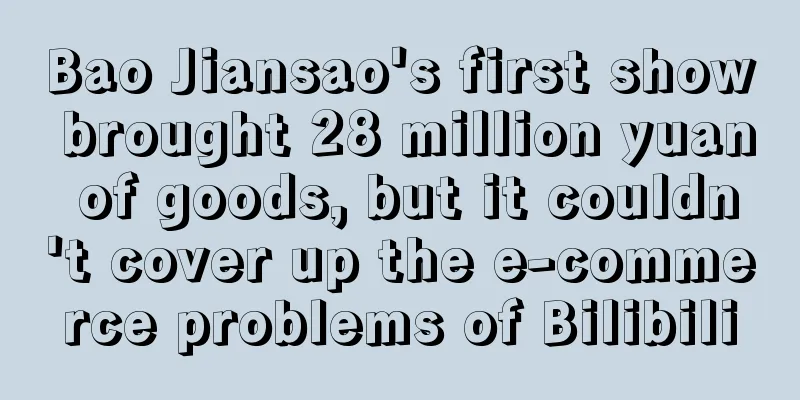40 years of changes in New Year's goods: a history of consumption upgrade

Every year before the Spring Festival, buying New Year's goods has become an indispensable and important ritual for every family. Since the 1980s, with the development of social economy and the steady increase of national income, the New Year's shopping list of Chinese consumers has undergone tremendous changes in the past 40 years. From the supply of tickets during the planned economy period to free consumption after the opening of the market economy, the content of New Year's goods purchased has gradually transitioned from the basic needs of food such as rice, flour, grain, oil, chicken, duck, fish and meat to general consumer goods such as tobacco, alcohol, sugar, tea, snacks and general merchandise. In recent years, those born in the 1980s and 1990s have become the backbone of the family, and the New Year's shopping list of Chinese families has become a chronicle reflecting the upgrading of national consumption. 1. New Year's Goods 1.0: Just for something good to eatIn the 1960s and 1970s, when supplies were scarce, many families rarely had access to meat on weekdays, and being able to eat meat during the Spring Festival was their biggest wish of the year. Therefore, many people born in the 1960s still remember the scene of following their parents to queue up all night to "buy pork" with food coupons and meat coupons before the Spring Festival. After entering the 1980s, people's living conditions began to improve, and the simple wish of "eating something good" could basically be satisfied during the Spring Festival, and the concept of every household buying New Year's goods during the Spring Festival came into being. However, in the early 1980s, there were not many types of New Year goods to choose from. The only popular products were tobacco, alcohol, candy, tea and various snacks wrapped in oil paper sold in state-owned stores. Fruit candies wrapped in colorful candy paper, biscuits in tin boxes, and White Rabbit milk candies, which are said to be "7 pieces equal a cup of milk", were what every child looked forward to most during the New Year. When visiting relatives and friends during the New Year, bringing malted milk in an iron can would raise the level of the gift a lot. Of course, not everyone can grab the hot-selling New Year goods sold in stores. Families that fail to buy New Year goods use their creativity to make New Year goods by themselves. For example, some people will buy pork with a large piece of fat, and then go home to refine lard and make bacon and sausages from pork; some people will make rice and flour into rice noodles and noodles, or use the boiled lard to make fried pastries; a few families will even fry peanuts and melon seeds as snacks for guests during the Spring Festival. Homemade New Year's goods may not be as exquisite as those in stores, but they are better because they are made with the right ingredients and at least have enough portions for family and friends to enjoy when they come to visit. The "flavor of the New Year" in many people's memories comes from these homemade New Year's goods. In addition to "eating something good", the advent of the electronic age has allowed some wealthy people to add durable consumer goods to their New Year shopping lists. The "new four big items" consisting of black-and-white TVs, tape recorders, refrigerators, and washing machines have replaced the "three turns and one sound" combination of sewing machines, bicycles, watches, and radios. Home appliances have become a way for people to show off their wealth after they have enough food and clothing. It is worth mentioning that since 1983, CCTV has held the Spring Festival Gala every year on New Year's Eve. It is rumored that many families at that time saved money to buy TVs so that they could watch the Spring Festival Gala at home during the Spring Festival. At the same time, the launch of classic TV series such as the 1986 version of "Journey to the West", "Heroes of the East" and "The Bund", as well as the popularity of Hong Kong and Taiwan pop music, also promoted the popularization of household appliances such as TVs and tape recorders. In the early days of the concept of New Year's goods, people were more pursuing a consumption concept of creating something from nothing and winning by quantity. 2. New Year’s Goods 2.0: The consumer market awakens and the brand effect becomes prominentFrom a market perspective, the emergence of consumption upgrades is often accompanied by an overall improvement in consumption power, which in turn generates new consumer demand. The iteration of New Year goods in the 1990s is closely related to the comprehensive awakening of the consumer market. Public data shows that in 1990, the per capita disposable income of the Chinese residents was only 900 yuan. By 1995, this figure reached 2,400 yuan, an increase of 167%. The development potential of the mainland consumer market was also discovered early by Taiwanese companies such as Hsu Fuji and Want Want. As Taiwanese companies gradually settled in the mainland, the consumer market has been booming. The Spring Festival, the peak season for New Year goods sales, has also become a new battlefield for brand marketing. In the early 1990s, due to the underdeveloped logistics and sales network, many local enterprises produced candies, soda and other non-staple foods, which often became the leaders in the local market. However, because most of these enterprises lacked brand awareness, consumers only knew the products but not the brands. For example, the gold ingot-shaped chocolate and the nougat wrapped in blue and white checkered paper can still trigger the memories of the post-80s and post-90s, but if you ask what brand they are, I am afraid few people can answer. In contrast, the Taiwanese brands that have been struggling for more than ten years have long been aware of the value of branding and marketing. Xu Fuji, which settled in Dongguan in 1992, was the first to promote the concept of "New Year's candy", deeply tied to the Spring Festival, the peak season for candy consumption, and quickly gained a foothold in the mainland market. After achieving initial success, Xu Fuji struck while the iron was hot and quickly expanded its SKUs, launching more than 40 products in one go, covering multiple subcategories such as milk candy, fruit candy, chocolate, and pastries. In order to allow consumers to buy as many kinds of candy as possible, Xu Fuji also launched a bulk weighing sales format. No matter how many kinds of candy the customer chooses, all are put together and weighed and priced at a unified price. It not only shortens the consumer decision-making process, but also improves settlement efficiency. At that time, the main scene of New Year's goods purchase had transitioned from wholesale markets to large supermarkets. In this context, Xu Fuji chose to immediately target people who went to supermarkets to purchase New Year's goods, so that consumers could frequently see Xu Fuji counters in various supermarkets. Most of these counters were dominated by independent stacks of Xu Fuji products, which often attracted special attention in the snack and candy area, and some were equipped with special weighing tables. From entering the supermarket to selecting candy, weighing and price tagging, the entire process was extremely smooth. Compared with Xu Fuji's "fast, accurate and ruthless" sales terminal, Want Want took advantage of the Chinese custom of families visiting each other during the Spring Festival, packaged its various snacks into big gift packages, and then intensively aired TV advertisements during the Spring Festival, making the Want Want gift packages a must-have souvenir for visiting relatives and friends during the Spring Festival. In addition to snacks, electronic consumption has also seen a round of upgrades along with branding. The first batch of successful people who went into business imitated the protagonists in Hong Kong and Taiwan TV, wearing leather jackets, curling their hair, and using "big brothers" and pagers. The black-and-white TVs at home were replaced with Changhong color TVs, and equipped with BBK VCDs and DVDs endorsed by Jet Li. The Subor learning machine endorsed by Jackie Chan and Melatonin, which became popular with its magical brainwashing advertisements, have become the most representative New Year products of this era. Since then, consumers have not only paid attention to quality when making purchasing decisions, but have also begun to be influenced by the brand effect. "Branded goods" that have been advertised on CCTV are more well-known to consumers and always achieve good sales. 3. New Year’s Goods 3.0: Channel changes, New Year’s goods enter the era of grass-roots shoppingCompared with the upgrade of market demand caused by the increase in consumption power, changes in sales channels and shopping habits have also become another incentive to promote the iteration of New Year goods. After seeing the great success of Hsu Fuji and Want Want in the Spring Festival market, local enterprises such as Daliyuan, Yili, and Mengniu also launched gift box products and vigorously promoted them during the Spring Festival, covering the terminal sales network from large supermarkets to mom-and-pop stores. As a result, the most common scene during the Spring Festival is parents taking their children out to pay New Year's greetings, with milk in their left hand and a box of Swiss rolls in their right hand. In addition to the active layout of offline channels by brands, the huge changes in online channels have brought unprecedented changes to the entire consumer market. After 2010, with the popularization of the Internet and the development of e-commerce and logistics, online shopping has become a new way to purchase New Year's goods. Especially after young people have grown into the main consumer group in the market, various novel imported snacks such as Danish butter cookies, Thai charcoal-roasted cashews, and Korean banana milk have also become "regulars" on the New Year's shopping list. The change in channels is undoubtedly a market trend that cannot be ignored for fast-moving consumer goods brands. As many consumers gradually develop the habit of online shopping, a number of e-commerce brands have found new business opportunities. Brands such as Three Squirrels and Be & Cheery focus their marketing efforts online and quickly attract a large number of young users and build brands by participating in shopping festivals on platforms such as Tmall Double 11 and JD 618. In 2015, major e-commerce platforms launched the "New Year Goods Festival" for the Spring Festival consumer market, which further tapped the market potential of Three Squirrels and Be & Cheery. Public data shows that during the 2020 Spring Festival, Three Squirrels' cumulative sales in 34 days reached 3.689 billion yuan, and its financial report shows that its annual revenue for that year was 9.794 billion yuan. This means that Three Squirrels completed nearly 40% of its annual sales in just over a month during the Spring Festival, and the channel value of the e-commerce platform is also revealed. However, the rise of e-commerce channels is not the last incentive to promote the iteration of New Year's goods. After being dazzled by the wide variety of New Year's goods and being tortured by the constant routine of e-commerce promotions to the point of losing the desire to shop, young consumers' attention has been captured by content. Some people will post on Zhihu to ask "What New Year's goods are worth buying", while others will select their own shopping lists based on the product experiences shared by other users. The new decision-making path has once again changed consumers' shopping habits and subverted the channel status that e-commerce platforms used to dominate the market. On content platforms such as Xiaohongshu and Douyin, influencers have produced a large amount of evaluation content for various products. The vivid pictures, texts and videos have helped consumers learn more about the products, while anchors have tried to impress consumers with the stories behind the products and the first-class product quality. As a result, consumers have begun to purchase New Year goods based on the content, or place orders with one click in the live broadcast room. Brands have also quickly cooperated with influencers and anchors to grab new traffic and sales channels. The changes in New Year's goods over the past 40 years have shown the improvement in the income and consumption level of Chinese consumers, and also reflected the changes and advancements in brand marketing in the ever-changing consumer market. From "products without brands" to the marketing strategy war, to the industry structure shock caused by channel changes, merchants have developed the ability to follow the changes in consumer demand and develop innovative products. From the beginning when the whole family lined up to buy New Year's goods, to now when people can place orders with their mobile phones, it has become more convenient to buy New Year's goods, and there are more categories to choose from. However, some people feel that the New Year's atmosphere is becoming less and less. This is because the satisfaction people get from buying New Year's goods is no longer as rare as "only being able to eat meat during the Spring Festival". When basic consumer goods such as tobacco, alcohol, sugar and tea can be met in daily life, the necessary sense of ritual is lost when buying New Year's goods for the whole family. But this is not a bad thing. Because when people try to think in another way, they will find that the happiness that was only available during the Chinese New Year before can now be experienced almost every day. This sense of satisfaction gained from the consumption behavior itself is also the meaning of consumption upgrading. Author: Early Summer Source: Jingzhe Research Institute (ID: jingzheyanjiusuo), exploring and discovering the new economy |
<<: Going to the big fair in a short video: The end of the universe is back to the village
>>: In order to save money, young people started the "mass migration" from Taobao
Recommend
What is the reason for Lazada's full-effect treasure being suspended? Full-effect treasure operation guide
When running a store on Lazada, you can also use s...
What is a data analysis project and how to do it?
Many students who are responsible for data will wa...
How much does Amazon Prime membership cost? What is Amazon Prime membership service?
In the tide of the digital age, Amazon Prime membe...
10,000-word construction | Brand global crowd asset growth flywheel
Brand global crowd assets are a strategic weapon i...
Can Amazon export tax rebates be obtained? What are the tax rebate rules?
As the Amazon platform continues to grow, more and...
Six ways to play with a food account, each one can earn money!
There are many food accounts on self-media platfor...
What does Douyin want to do by guiding businesses to sell products not through live streaming or short videos?
"You don't need to broadcast or shoot sho...
Is Weee certification recognized in China? What does Weee certification mean?
Germany is a country with very strict environmenta...
Six unconventional methods helped lululemon achieve excess profits
In the development history of sportswear brand lul...
Can I use domestic credit cards to receive payments on Shopee? How do I bind a card?
More and more merchants are opening stores on Shop...
Why is cross-border e-commerce operation easy to do? How to do it?
Nowadays, with the advancement of globalization, t...
The short drama that has attracted 500 million people is the new traffic code for brands
This article delves into how the short drama marke...
Among Douyin, Kuaishou, Toutiao, WeChat official accounts, and Xiaohongshu, which one is easier to make money by running your own media?
This article compares and analyzes the advantages ...
Luckin Coffee may have the fastest marketing team in China
This article deeply analyzes Luckin Coffee's r...
How to make cost-effective content marketing more effective than advertising? Understand the difference between the two in one article
This article starts from the underlying logic of t...









